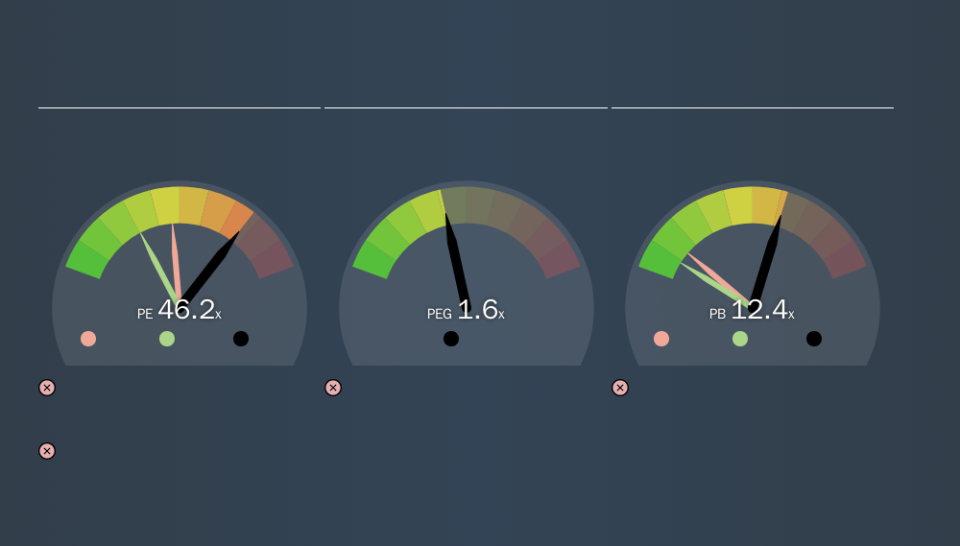What Is Etsy's (NASDAQ:ETSY) P/E Ratio After Its Share Price Tanked?

To the annoyance of some shareholders, Etsy (NASDAQ:ETSY) shares are down a considerable 31% in the last month. The recent drop has obliterated the annual return, with the share price now down 14% over that longer period.
All else being equal, a share price drop should make a stock more attractive to potential investors. While the market sentiment towards a stock is very changeable, in the long run, the share price will tend to move in the same direction as earnings per share. The implication here is that long term investors have an opportunity when expectations of a company are too low. Perhaps the simplest way to get a read on investors' expectations of a business is to look at its Price to Earnings Ratio (PE Ratio). A high P/E ratio means that investors have a high expectation about future growth, while a low P/E ratio means they have low expectations about future growth.
View our latest analysis for Etsy
How Does Etsy's P/E Ratio Compare To Its Peers?
Etsy's P/E of 46.24 indicates some degree of optimism towards the stock. As you can see below, Etsy has a higher P/E than the average company (26.6) in the online retail industry.
Its relatively high P/E ratio indicates that Etsy shareholders think it will perform better than other companies in its industry classification. The market is optimistic about the future, but that doesn't guarantee future growth. So further research is always essential. I often monitor director buying and selling.
How Growth Rates Impact P/E Ratios
P/E ratios primarily reflect market expectations around earnings growth rates. If earnings are growing quickly, then the 'E' in the equation will increase faster than it would otherwise. Therefore, even if you pay a high multiple of earnings now, that multiple will become lower in the future. Then, a lower P/E should attract more buyers, pushing the share price up.
It's nice to see that Etsy grew EPS by a stonking 32% in the last year.
Remember: P/E Ratios Don't Consider The Balance Sheet
One drawback of using a P/E ratio is that it considers market capitalization, but not the balance sheet. Thus, the metric does not reflect cash or debt held by the company. The exact same company would hypothetically deserve a higher P/E ratio if it had a strong balance sheet, than if it had a weak one with lots of debt, because a cashed up company can spend on growth.
Spending on growth might be good or bad a few years later, but the point is that the P/E ratio does not account for the option (or lack thereof).
How Does Etsy's Debt Impact Its P/E Ratio?
The extra options and safety that comes with Etsy's US$76m net cash position means that it deserves a higher P/E than it would if it had a lot of net debt.
The Verdict On Etsy's P/E Ratio
Etsy trades on a P/E ratio of 46.2, which is above its market average of 18.3. Its net cash position is the cherry on top of its superb EPS growth. So based on this analysis we'd expect Etsy to have a high P/E ratio. Given Etsy's P/E ratio has declined from 67.1 to 46.2 in the last month, we know for sure that the market is significantly less confident about the business today, than it was back then. For those who prefer to invest with the flow of momentum, that might be a bad sign, but for a contrarian, it may signal opportunity.
When the market is wrong about a stock, it gives savvy investors an opportunity. As value investor Benjamin Graham famously said, 'In the short run, the market is a voting machine but in the long run, it is a weighing machine. So this free report on the analyst consensus forecasts could help you make a master move on this stock.
Of course, you might find a fantastic investment by looking at a few good candidates. So take a peek at this free list of companies with modest (or no) debt, trading on a P/E below 20.
We aim to bring you long-term focused research analysis driven by fundamental data. Note that our analysis may not factor in the latest price-sensitive company announcements or qualitative material.
If you spot an error that warrants correction, please contact the editor at editorial-team@simplywallst.com. This article by Simply Wall St is general in nature. It does not constitute a recommendation to buy or sell any stock, and does not take account of your objectives, or your financial situation. Simply Wall St has no position in the stocks mentioned. Thank you for reading.

